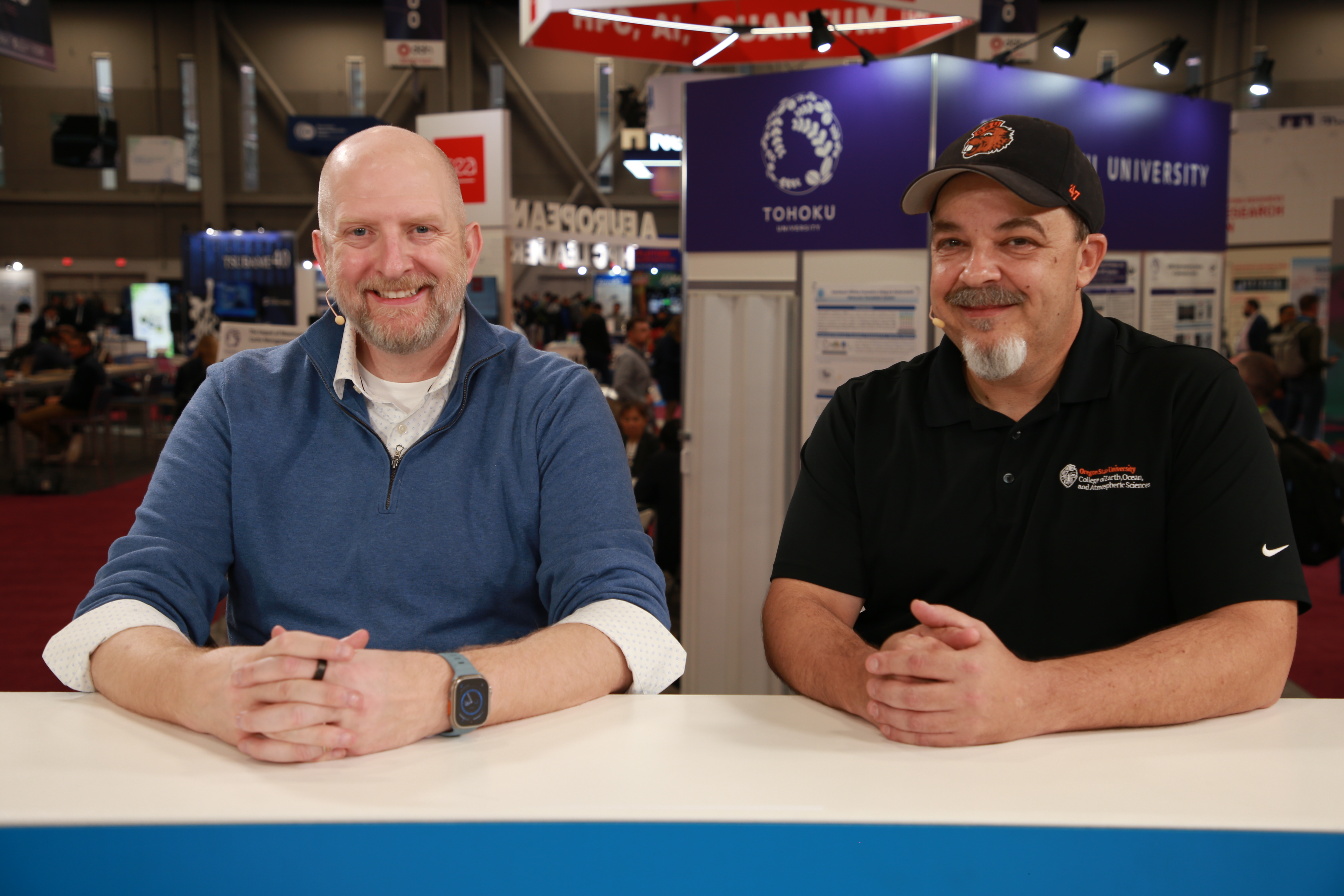 BIG DATA
BIG DATA
 BIG DATA
BIG DATA
 BIG DATA
BIG DATA
The future of ocean science is arriving on the bow of a $150 million research vessel — complete with an onboard data center, AI-driven sampling tools and a new blueprint for how supercomputing meets ocean science.
Plankton may be small, but the stakes are massive. These organisms generate half the planet’s oxygen, sequester a quarter of its carbon and anchor global food webs. To understand how climate change is reshaping these systems, a marine research team from Oregon State University is deploying AI-powered classification models directly on research vessels — and the compute demands are enormous.
“We work with Dell to try and change the way we’re doing science, and Dell devotes engineers and time to this,” said Christopher M. Sullivan (pictured, right), director of research and academic at Oregon State University. “We’re really focused right now on a project around plankton, because it’s actually about ocean health and about climate change. Plankton produces about 50% of the oxygen you breathe. It’s about 25% of the carbon sink on this planet. It’s 17% of the foods you eat. If you like to breathe and eat, it’s kind of important.”
Sullivan and Seamus Jones (left), director of Dell technical marketing engineering at Dell Technologies Inc., spoke with theCUBE’s John Furrier and Jackie McGuire at SC25, during an exclusive broadcast on theCUBE, SiliconANGLE Media’s livestreaming studio. They discussed how edge AI, resilient hardware and academic-industry collaboration are redefining how we study the planet’s most vital ecosystems. (* Disclosure below.)
From adaptive sampling on open water to AI-assisted assessments on campus, the same AI factory driving enterprise innovation is now reshaping scientific discovery, powering sea-based data centers that generate 500 terabytes per experiment, run 14 parallel missions and deliver real-time, failure-proof insights in unforgiving ocean environments, according to Sullivan.
“Dell partners with us to determine how we need to proceed forward,” he said. “We did this before with our Ocean Observatories Initiative, and now we’re trying to do this with how we do plankton. One of the reasons we need to do this is that it’s crucial to put it at the edge, because the ship costs a million dollars to run just for 10 days in the ocean. If I were to put things into the ocean and come back with no data, that would probably be bad.”
Dell’s PowerEdge XE7745 server — packed with Solidigm SSDs and flexible GPU configurations — has emerged as the applicable solution. With air-cooled RTX 6000 GPUs, vast local storage and support for massive ingest workloads, the system has unlocked a 3× performance leap by eliminating unnecessary data movement, according to Jones.
“When our engineers put together the plans for the XE7745, one key or critical component was to make sure that we can assure that we’ve got a CPU that can scale, we’ve got memory architectures that can deal with the workload,” he said. “Also, we needed to get hard drive capability and capacity and then also GPU availability.”
Here’s the complete video interview, part of SiliconANGLE’s and theCUBE’s coverage of SC25:
(* Disclosure: Dell Technologies and Nvidia Corp. sponsored this segment of theCUBE. Neither Dell and Nvidia nor other sponsors have editorial control over content on theCUBE or SiliconANGLE.)
Support our mission to keep content open and free by engaging with theCUBE community. Join theCUBE’s Alumni Trust Network, where technology leaders connect, share intelligence and create opportunities.
Founded by tech visionaries John Furrier and Dave Vellante, SiliconANGLE Media has built a dynamic ecosystem of industry-leading digital media brands that reach 15+ million elite tech professionals. Our new proprietary theCUBE AI Video Cloud is breaking ground in audience interaction, leveraging theCUBEai.com neural network to help technology companies make data-driven decisions and stay at the forefront of industry conversations.